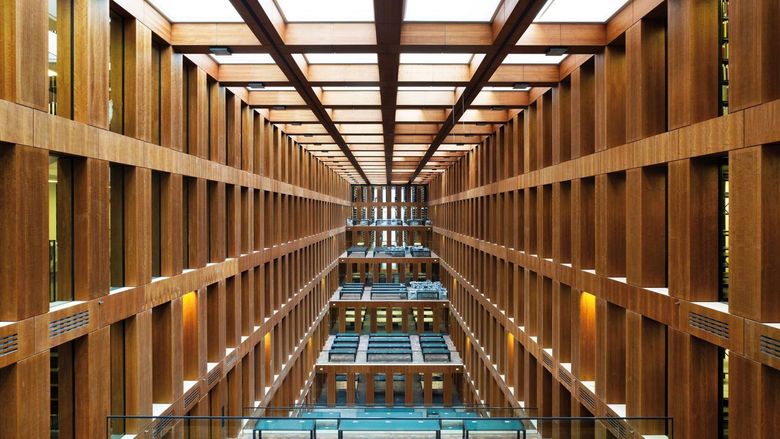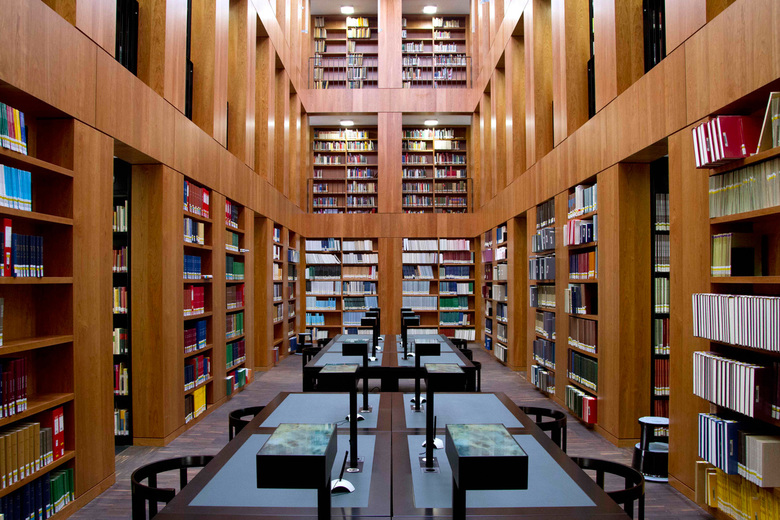Folkwang Library's Printed Glass
On September 19, 2012, the new Folkwang Library opened on the Essen-Werden campus of the Folkwang University of the Arts. The boxy building, designed in a 2006 competition by Max Dudler, holds a 200,000-strong musicological collection behind a translucent skin that looks like stone but is in fact a series of 12 photographs applied to glass.
Yet, what attracts one's attention is the library's cladding. In the top photo it appears to be built of stone panels set into aluminum framing. But as the above photo attests, it is actually a glass façade. What might then be considered a thin slice of stone applied to the glass is in fact photographs applied to the inner pane of insulated glazing units. Photographer Stefan Müller visited a nearby quarry and took close-up shots of uncut stone. Twelve of them were then applied to the glass at full-scale, in reference to the 12 notes of the chromatic scale.
The effect of the translucent glass skin—realized, it should be noted, with consultant KonTec Fassadenberatung and manufacturer Wigger Fenster + Fassaden—is pronounced on the interior during the day, and on the exterior when the lights glow from within and turn the building into a glowing box of "stone" bands. For library patrons, the translucency helps to create an ambient environment suitable to studying, and it is also ideal for the protection of the materials housed within.
An obvious precedent can be found in Yale University's Beinecke Rare Book and Manuscript Library, designed by SOM's Gordon Bunshaft and completed in 1963. Not only is it a boxy building with a translucent skin, the library defines one side of a plaza on the New Haven campus, giving the building's long elevation a frontality and prominence, as in Essen-Werden. Yet Bunshaft's building is actually clad in stone, Vermont Danby marble to be precise, which appears light on the exterior during the day but glows yellow and golden on the interior. (The books are actually housed in a smaller glass volume, due to the poor thermal performance of the stone cladding.)
An earlier project by Max Dudler points to a more direct precedent for the Folkwang Library's glowing exterior, as well as the design of the interior spaces. For the Jacob-und-Wilhelm-Grimm Library (2009) in Berlin, the architect designed a lamp for tables occupying the large, skylit central atrium. The small rectangular lamps feature a top made from 2mm of green translucent Brazilian quartzite bonded to a glass surface. The same light fixtures can be found in the smaller three-story space at the heart of the Folkwang Library; as in Berlin, the space is skylit and lined by a cherry-wood grid.
Max Dudler describes the lamps as "a pleasant glare-free functional light [that] casts an unbelievable accent light which finds its way through a thousand-year-old stone." While the exterior of the Folkwang Library is only the image of stones thousands of years old, the equally unbelievable light that results from contemporary techniques is hard to deny.





